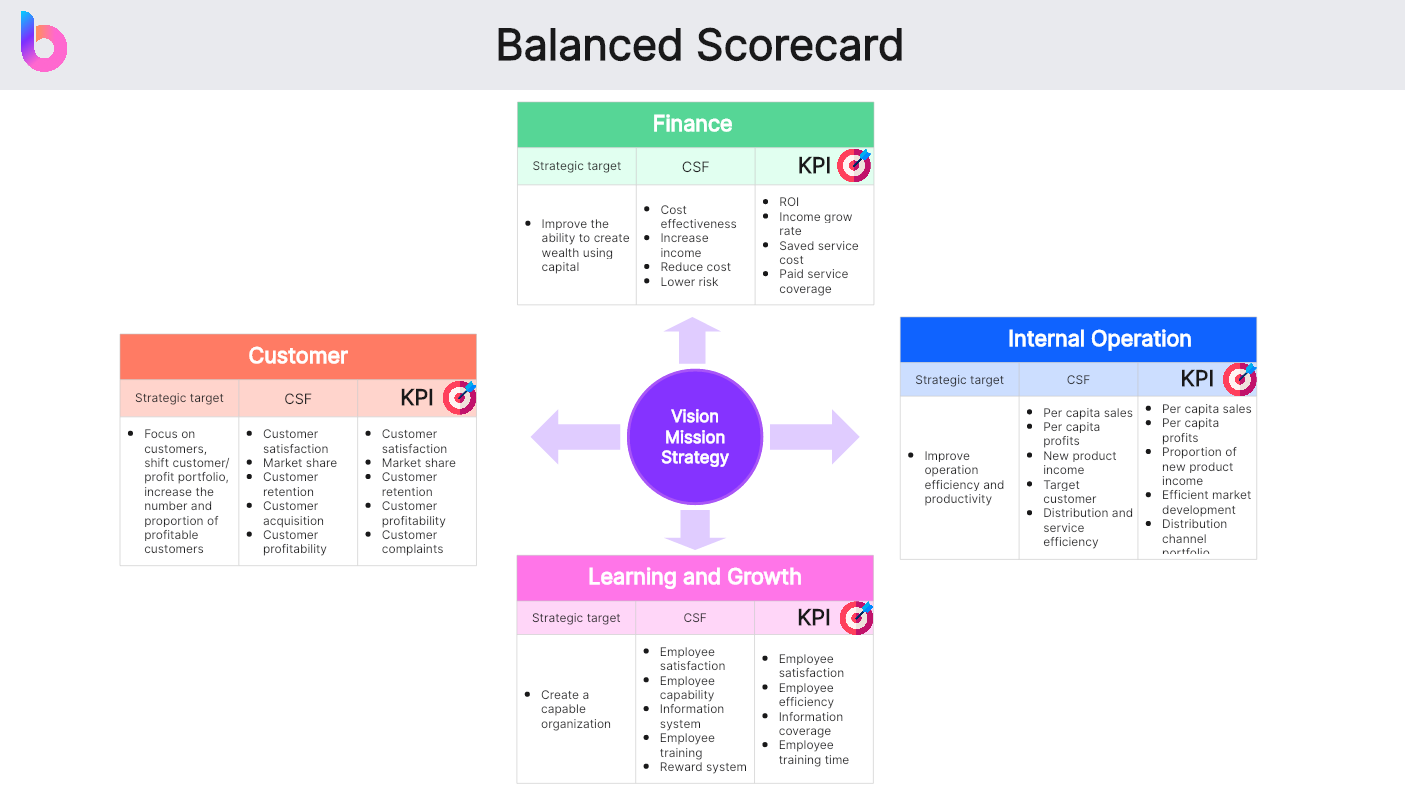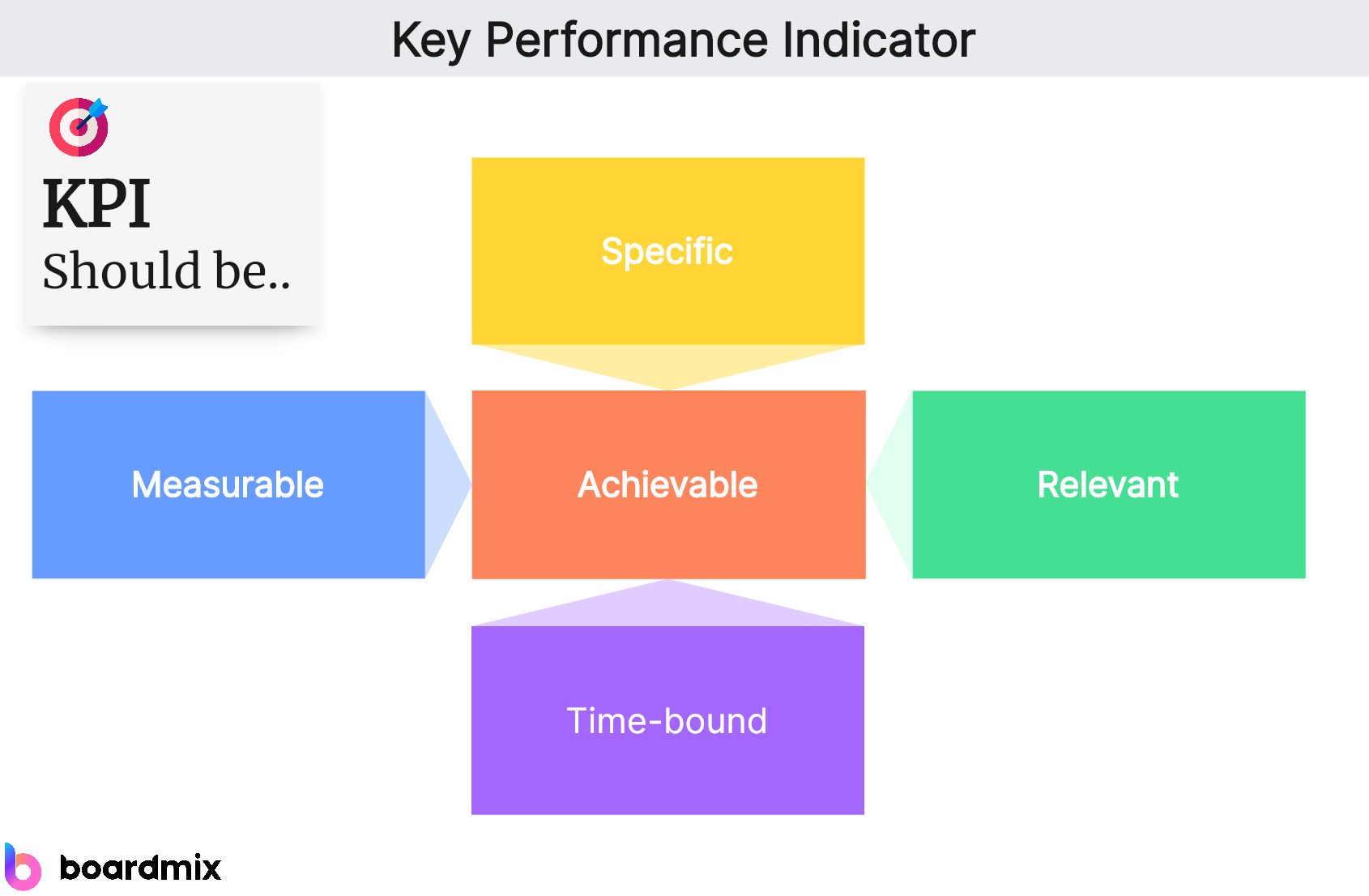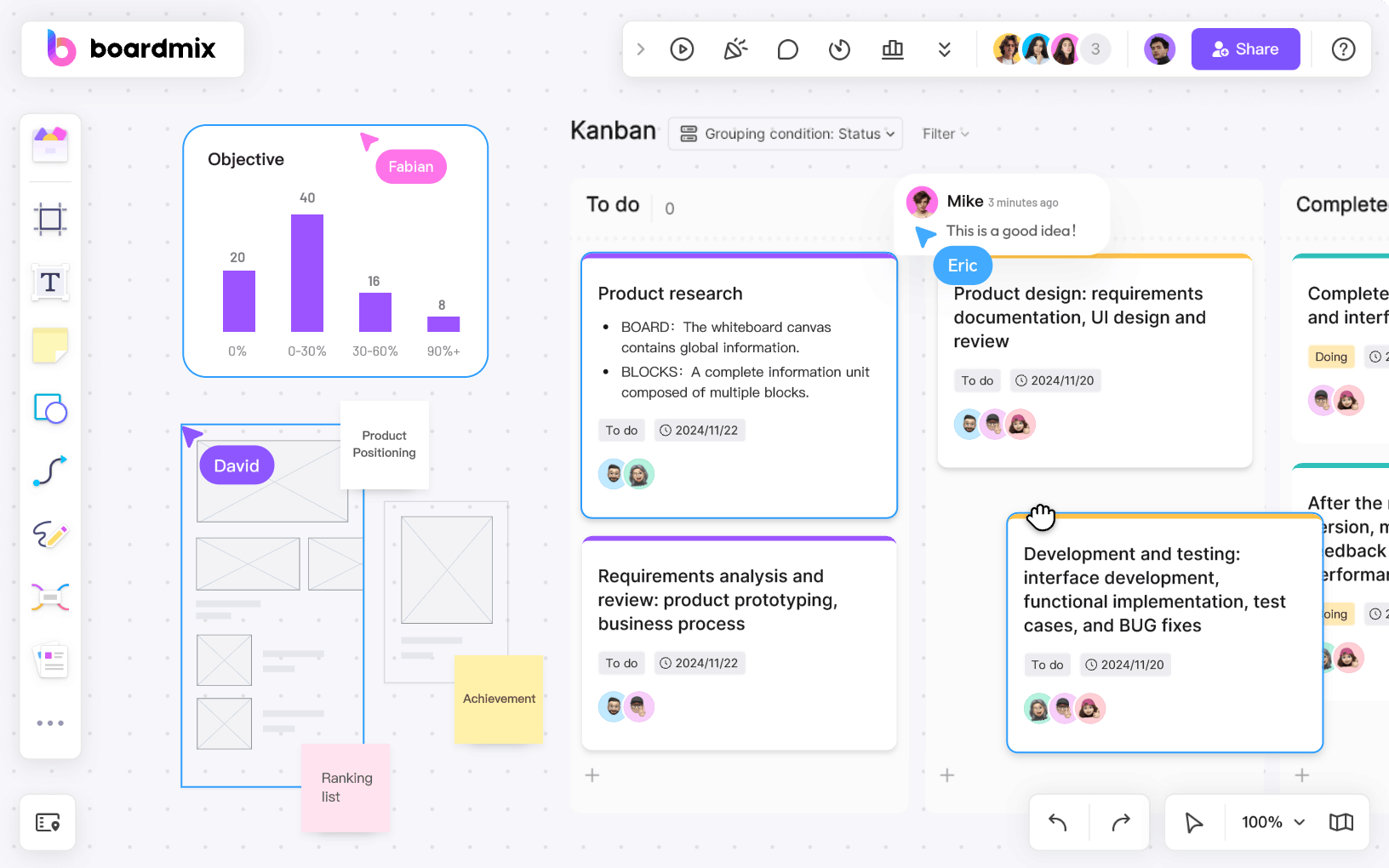In the evolving field of business management, a deep understanding of performance metrics is integral to the prosperity of organizations. This article explores the issues surrounding two key tools in this area - the Balanced Scorecard (BSC) and Key Performance Indicators (KPIs). As we delve into the nuances and differences between these approaches, the focus will remain on enhancing the understanding and effective use of performance metrics, without presenting any specific solutions.
Understanding the Balanced Scorecard and Key Performance Indicators
The Balanced Scorecard (BSC) and Key Performance Indicators (KPIs) are fundamental tools in strategic management, providing organizations with valuable insights for effective decision-making and performance evaluation.
Balanced Scorecard
The Balanced Scorecard is a comprehensive strategic management framework that translates an organization's mission and vision into specific objectives and performance metrics. It typically encompasses four key perspectives: financial, customer, internal processes, and learning and growth.

The BSC serves as a navigational guide, aligning business activities with the organization's strategic goals. It provides a balanced view by considering financial and non-financial factors, offering a holistic approach to performance measurement.
Benefits:
- Clarity of Objectives: Clearly defines and communicates organizational objectives across different perspectives.
- Strategic Alignment: Ensures that all activities contribute to the overall strategic goals.
- Performance Monitoring: Facilitates ongoing assessment and adjustment of strategies for optimal performance.
Key Performance Indicators
KPIs are quantifiable metrics used to evaluate the success of an organization, department, or specific activities. They represent critical aspects of performance and help gauge progress towards strategic objectives.

KPIs provide a focused and measurable way to track performance, enabling organizations to identify areas for improvement and make informed decisions. They are essential for understanding if strategic goals are being achieved.
Benefits:
- Measurability: Offers concrete, measurable data to assess performance against predefined goals.
- Decision Support: Guides decision-making by highlighting areas requiring attention or improvement.
- Continuous Improvement: Facilitates a culture of continuous improvement by identifying and addressing performance gaps.
Differences between the Balanced Scorecard and Key Performance Indicators
In the realm of performance management, distinguishing between the Balanced Scorecard (BSC) and Key Performance Indicators (KPIs) is essential for organizations seeking nuanced insights. While both tools aim to enhance decision-making and performance evaluation, they differ significantly in their focus, measurement approaches, and strategic implications.
Focus and Scope:
- Balanced Scorecard (BSC): Encompasses a broader strategic management framework, including financial and non-financial perspectives such as customer satisfaction, internal processes, and learning and growth.
- Key Performance Indicators (KPIs): Are specific, measurable metrics that focus on individual aspects of performance, providing a narrower and more detailed view.
Nature of Metrics:
- Balanced Scorecard (BSC): Involves a mix of leading and lagging indicators, combining historical performance data with forward-looking measures to guide strategic decisions.
- Key Performance Indicators (KPIs): Primarily consist of lagging indicators, offering a snapshot of past performance to assess achievement against predefined goals.
Strategic vs. Tactical:
- Balanced Scorecard (BSC): Primarily strategic in nature, guiding the overall direction of the organization and ensuring alignment with long-term goals.
- Key Performance Indicators (KPIs): Often used at a more tactical level, providing specific, operational insights to assess day-to-day performance.
Measurement Approach:
- Balanced Scorecard (BSC): Emphasizes a balanced approach by considering both financial and non-financial metrics, ensuring a comprehensive view of organizational performance.
- Key Performance Indicators (KPIs): May focus more heavily on financial metrics or specific operational metrics, depending on the organization's objectives.
Flexibility and Adaptability:
- Balanced Scorecard (BSC): Offers a flexible framework that can be adapted to various industries and organizational structures, allowing customization based on unique strategic priorities.
- Key Performance Indicators (KPIs): Provide more granular and specialized insights, often tailored to specific departments or functions, limiting their broad applicability.
Understanding these distinctions is crucial for organizations to select and implement the most suitable tool or a combination of both, depending on their strategic objectives and operational needs. The Balanced Scorecard and Key Performance Indicators, while distinct, can complement each other when strategically integrated to provide a comprehensive approach to performance management.
Interaction of Balanced Scorecard and Key Performance Indicators
In the orchestration of effective performance management, the synergy between the Balanced Scorecard (BSC) and Key Performance Indicators (KPIs) becomes a pivotal aspect of strategic decision-making. These two methodologies, while distinct in their approaches, share a symbiotic relationship that fosters a holistic understanding of organizational performance.
Complementary Nature:
- Balanced Scorecard (BSC): Provides a strategic framework for aligning organizational objectives with performance metrics across various perspectives.
- Key Performance Indicators (KPIs): Offer specific, measurable data points that contribute to the achievement of objectives outlined in the BSC.
Holistic Performance Assessment:
- Balanced Scorecard (BSC): Facilitates a comprehensive evaluation by considering financial and non-financial aspects, offering a well-rounded perspective.
- Key Performance Indicators (KPIs): Contribute detailed insights into specific operational areas, enriching the overall understanding provided by the BSC.
Feedback Loop:
- Balanced Scorecard (BSC): Serves as the overarching framework, guiding the selection and prioritization of KPIs based on strategic goals.
- Key Performance Indicators (KPIs): Provide real-time feedback on the effectiveness of strategies outlined in the BSC, allowing for timely adjustments.
Decision Support:
- Balanced Scorecard (BSC): Offers a high-level view for strategic decision-making, ensuring that choices align with the organization's mission and long-term vision.
- Key Performance Indicators (KPIs): Serve as practical tools for day-to-day decision-making, enabling managers to address specific operational challenges highlighted by the BSC.
Continuous Improvement:
- Balanced Scorecard (BSC): Guides the organization towards continuous improvement by periodically assessing and adjusting strategic priorities.
- Key Performance Indicators (KPIs): Facilitate the identification of specific areas for improvement, contributing to the overall goal of continuous enhancement set by the BSC.
Understanding the interaction between the Balanced Scorecard and Key Performance Indicators is pivotal for organizations aiming to harness the full potential of these tools. The synergy between these methodologies creates a dynamic performance management framework, combining strategic guidance with detailed operational insights for sustained success.
Connecting the Balanced Scorecard to Key Performance Indicators with Boardmix
In the realm of strategic management, Boardmix emerges as a game-changer, offering a dynamic platform with an array of template functionalities. This tool goes beyond conventional solutions, enabling users to bridge the gap between the Balanced Scorecard (BSC) and Key Performance Indicators (KPIs). With intuitive features for data visualization, collaboration, and strategic planning, Boardmix empowers organizations to streamline their performance management processes.

Boardmix Template: Bridging Balanced Scorecard and Key Performance Indicators
Boardmix's template presents an innovative solution for connecting the Balanced Scorecard and Key Performance Indicators. This template acts as a centralized hub, allowing users to seamlessly integrate and visualize data from both methodologies. Its user-friendly interface facilitates a smooth navigation experience, ensuring that the complexities of performance management are simplified and accessible to all stakeholders.

Utilizing Boardmix: A Simplified Workflow
- Access the Template: Log in to Boardmix and navigate to the dedicated Balanced Scorecard and KPI template.
- Import Data: Easily import data from existing BSC and KPI sources into the template for consolidation.
- Visualize Insights: Leverage the template's visualization tools to gain comprehensive insights into the relationship between strategic objectives and key performance metrics.
- Collaborate in Real Time: Foster collaboration by allowing multiple stakeholders to contribute and analyze data concurrently.
Benefits of Versatile Boardmix Template
- Streamlined Decision-Making: The Boardmix template facilitates a unified view of BSC and KPI data, enabling informed decision-making by considering both strategic and operational perspectives.
- Enhanced Collaboration: Real-time collaboration features promote communication and alignment among team members, ensuring everyone is on the same page regarding organizational objectives and performance metrics.
- Increased Efficiency: By consolidating BSC and KPI data in one platform, Boardmix eliminates the need for toggling between multiple tools, streamlining processes and saving valuable time.
- Improved Strategic Alignment: Boardmix's template enhances strategic alignment by visually presenting the interconnectedness between BSC objectives and KPIs
In embracing Boardmix's template functionality, organizations can elevate their performance management strategies, seamlessly connecting the Balanced Scorecard to Key Performance Indicators for a more integrated and efficient approach.
Tips and Tricks for Applying Balanced Scorecard and Key Performance Indicators
Navigating the intricacies of the Balanced Scorecard (BSC) and Key Performance Indicators (KPIs) requires a strategic approach. Consider the following tips and tricks to maximize the effectiveness of these performance management tools.
- Define Clear Objectives:
- Clearly articulate organizational objectives aligned with the mission and vision.
- Ensure objectives are specific, measurable, achievable, relevant, and time-bound (SMART).
- Well-defined objectives serve as the foundation for both the BSC and KPIs.
- Select Relevant Key Performance Indicators:
- Identify key metrics directly linked to strategic objectives.
- Choose KPIs that provide actionable insights and align with the organization's goals.
- Avoid the temptation to track too many metrics; focus on those most critical to success.
- Regularly Review and Update:
- Establish a routine for reviewing and updating the BSC and associated KPIs.
- Adapt metrics to changing business environments, ensuring continued relevance.
- Regular reviews foster agility and responsiveness in the face of evolving organizational needs.
- Foster Communication and Collaboration:
- Encourage open communication between teams responsible for BSC and KPI management.
- Foster collaboration to ensure that everyone understands the significance of the metrics.
- Establish a shared understanding of how individual and team efforts contribute to overarching goals.
- Utilize Technology Solutions:
- Explore technology platforms, like Boardmix, designed to integrate BSC and KPIs seamlessly.
- Leverage dashboards for real-time data visualization, aiding in informed decision-making.
- Technology solutions enhance efficiency and accuracy in managing performance metrics.
- Focus on Continuous Improvement:
- Instill a culture of continuous improvement within the organization.
- Use BSC and KPIs as tools for identifying areas of success and those in need of enhancement.
- Encourage teams to regularly reassess processes and strategies based on performance insights.
Effectively implementing the Balanced Scorecard and Key Performance Indicators requires a blend of strategic planning, communication, and adaptability. With these tips and tricks, businesses can navigate the dynamic landscape of performance metrics with confidence, driving sustained success and strategic growth. To unlock the full potential of performance metrics, consider exploring Boardmix and taking your organizational performance to new heights. Embrace the future of performance management – integrate, visualize, and thrive with Boardmix.








